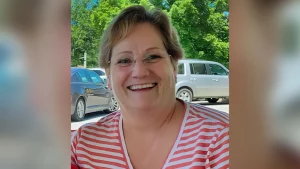by Kristin Rowan | Dec 16, 2024
by Kristin Rowan, Editor
Last week, we reported on the proposed Bill in the Connecticut Senate and House to provide additional precautions for home care worker safety. In wake of the  Joyce Grayson murder during a home health visit, leadership in Connecticut aimed to safeguard home health and home health aide workers and collect risk assessment data on the same.
Joyce Grayson murder during a home health visit, leadership in Connecticut aimed to safeguard home health and home health aide workers and collect risk assessment data on the same.
On May 6, 2024, CT legislature passed bills in both the Senate and House of Representatives. Instead of the proposed bills that we reported on previously, both branches added amendments to previous bills. The bills include provisions for cyberattack readiness, child safety, and other items not related to care in the home.
First Stage of Home Care Worker Safety
Some of the provisions in the final bill are effective July 1, 2024. As we previously reported, hospice agencies are currently exempt from these provisions and the CT legislature will address hospice agencies in their next session.
On and after July 1, 2024
The Commissioner shall increase the fee payable to a home health care or home health aide agency that provides escorts for safety purposes to staff conducting a home visit to cover the costs of providing such escorts.
The Commission of Public Health will establish and administer a home care staff safety grant program to provide grants to home health and home health aide agencies for staff safety technology, including, but not limited to :
- A mobile application for staff to access safety information about a client
- A method for staff to communicate with either local police or other staff in the event of an emergency
- A global positioning system-enabled, wearable device that allows staff to contact local police
Effective July 1, 2024
The sum of one million dollars is appropriated to the Department of Public Health for the the fiscal year ending June 30, 2025, to establish and administer the aforementioned grant program.
The Commissioner of Public Health and the Commission on Community Gun Violence Intervention and Prevention, will develop or find educational material about gun safety practices and provide such to primary care providers to give to patients who are 18 years of age or older.
Second Stage of Home Care Worker Safety
Some of the provisions in the final bill are effective October 1, 2024. Home health and home health aide agencies have five months to comply with these measures.
Effective October 1, 2024, home health and home health aide agency must collect and provide to assigned workers information about:
The client, including as applicable;
- psychiatric history
- history of violence
- history of substance use
- history of domestic abuse
- current infections, if any, and treatment received
- whether diagnoses or symptoms have remained stable over time
Other persons present or anticipated to be present at the location of care including, if known to the agency:
- name and relationship to client
- psychiatric history
- history of violence or domestic abuse
- criminal record
- history of substance use
Location where employee will provide services including, if know to the agency:
- the crime rate for the municipality in which employee will provide services
- the presence of any hazardous materials, including, but not limited to used syringes
- the presence of firearms or other weapons
- the status and of the fire alarm system
- the presence of any safety hazards, including, but not limited to, electrical hazards
By October 1, 2024, each home health and home health aide agency must:
Provide staff training consistent with the health and safety training curriculum for home care workers, including but not limited to:
- Training to recognize hazards commonly encountered in home care workplaces
- Applying practical solutions to manage risks and improve safety
Conduct monthly safety assessments with each staff member and
Provide staff with a mechanism to perform safety checks, which may include, but need not be limited to:
- A mobile application that allows staff to access safety information about the client
- A means of communicating with local police or other staff in the event of an emergency
- A global positioning system-enabled, wearable device that allows staff to contact local police by pressing a button or through another mechanism
Effective October 1, 2024
Each home health and home health aide agency shall, in a manner prescribed by the Commissioner of Public Health:
- Report each instance of verbal abuse that is perceived as a threat or danger to the staff
- Report each instance of physical, sexual, or any other abuse by a client against a staff member
Third Stage of Home Care Worker Safety
No later than January 1, 2025
Beginning January 1, 2025 and annually therafter, the commissioner shall report to the joint standing committee:
- The number of reports of violence and abuse received
- The actions taken to ensure the safety of the staff member about whom the report was made
Effective January 1, 2025
Each individual health insurance policy shall provide coverage for escorts for the safety of home health care agency or home health aide agency staff
The joint standing committee of the General Assembly will convene a working group to study staff safety issues affecting home health and home health aide agencies, including but not limited to the following members:
- Three employees of a home health care or home health aide agency
- Two representatives of a home health care or home health aide agency
- One representative of a collective bargaining unit representing home health care or home health aide agency employees
- One representative of a mobile crisis response services provider
- One representative of an assertive community treatment team
- One representative of a police department; and
- One representative of an association of hospitals in the state
As we mentioned before, these regulations will become mandates across the country soon. OSHA has found the home care agency in Connecticut at fault for failing to implement safety procedures and precautions in the death of Joyce Grayson. The nurse’s family is suing the home health agency for wrongful death. Connecticut has established a protocol for safety measures, committees, reporting, and grant programs to implement immediate safety procedures across home health and home health aide agencies in the state. Before these provisions are passed on a national level, and before you have to tell the family of one of your staff that they aren’t coming home…
We urge you to:
- Create a safety committee within your agency
- Invest in training on de-escalation, workplace violence prevention, and self-defense
- Research and invest in a GPS-enabled emergency alert system for your staff. We recommend POM Safe and Katana Safety
- Insist on background information on all clients and others living in the home upon intake and BEFORE the first home visit
- Create a safe and comfortable way for your staff to report verbal abuse, violence, or uneasiness from any in-home visit
- Invest in escort and/or paired visits for high-risk clients, first-time clients, or any other situation that warrants it
We will continue to follow this story and provide updates as we receive them.
Kristin Rowan has been working at Healthcare at Home: The Rowan Report since 2008. She has a master’s degree in business administration and marketing and runs Girard Marketing Group, a multi-faceted boutique marketing firm specializing in event planning, sales, and marketing strategy. She has recently taken on the role of Editor of The Rowan Report and will add her voice to current Home Care topics as well as marketing tips for home care agencies. Connect with Kristin directly kristin@girardmarketinggroup.com or www.girardmarketinggroup.com
©2024 by The Rowan Report, Peoria, AZ. All rights reserved. This article originally appeared in Healthcare at Home: The Rowan Report. One copy may be printed for personal use: further reproduction by permission only. editor@therowanreport.com
by Tim Rowan | Dec 15, 2024
by Tim Rowan, Editor Emeritus
Is Medicare Advantage Killing Us?
Dr. Steve Landers has long been eloquent in his speaking and writing about the importance of Home Health over the years. Though I was already impressed, I gained a new level of respect this week. Simultaneously with his debut as CEO of the new Alliance, Dr. Landers released an article about a recent study on the impact of Medicare Advantage on Medicare beneficiaries.
It is an article that everyone in our healthcare sector should read.
In “Home Health Cuts and Barriers are Life and Death Issues for Medicare Beneficiaries,” Dr. Landers points readers toward a study conducted by Dr. Elan Gada of UnitedHealthcare’s Optum Group. The results are disturbing. That the findings were released by a Medicare Advantage company is surprising.
Yes, Virginia, Home Healthcare Really Does Save Lives
Landers cited the study’s primary finding. “Medicare Advantage beneficiaries in their plan who did not receive needed home health care after hospitalization were 42% more likely to die in the 30 days following a hospital stay than those who received the prescribed care.” If a drug proved to be as effective as post-discharge home healthcare in saving lives, Landers wrote, “it would dominate the news, restricting access would be considered immoral, and health officials would be pushing its adoption.”
Medicare Advantage Enrollees Go Without
There are a number of reasons a hospital discharged patient might not receive home healthcare, including system issues and patient refusal. However, Dr. Gada’s study also discovered that MA customers go without post-discharge home health at a higher rate than traditional Medicare beneficiaries. Traditional Medicare beneficiaries go without in-home care about 25% of the time. Medicare Advantage beneficiaries 38% of the time. Landers notes that this data is a few years old and that the denial rate for MA customers is likely higher today.
We know the life-saving impact of post-hospital home healthcare. The question becomes: how does our little corner of the U.S. healthcare system help regulators and payers to know it as well as we do? At this week’s inaugural conference of the National Alliance for Care at Home, at least three education sessions discussed Medicare Advantage. All three offered strategies for negotiating with insurance companies and surviving under their oppressive rate structures and their frequent care denials.
These Are Bandages, Not Cures
In previous opinion pieces, I have quoted revelations in government lawsuits against MA divisions of insurance companies. These prove the program that was originally launched to extend the lifespan of the Medicare Trust Fund actually costs CMS 118 percent of what traditional Medicare costs. At the same time, insurance company reports to shareholders proudly point out that their MA division is their most profitable.
One of last week’s most read stories was the report from UnitedHealth Group on their astounding Q3 growth.
Learning to cope with MA care denials and below-cost visit payments is fine for those focused on making next month’s payroll. An entirely different tactic is needed for those focused on the care needs of their elderly parents or who are approaching age 65 themselves. The question must be asked, “Why does Medicare Advantage exist?”
Medicare Advantage Lobbyists
AHIP is the insurance company lobby. It put extreme pressure on Congress in 2009 when the Affordable Care Act was being written. That pressure resulted in then-President Obama removing a core plank from his bill. Obama struck the public option healthcare insurance plan in order to win enough votes to get the bill to his desk.
That lobbying effort continues today precisely because MA is so profitable. How does it bring in so much cash? One after another, all of the large insurance companies have been caught padding patient assessments, the very fraud Home Health is so often accused of. Their monthly checks are determined by how much care they predict their covered lives will need, and they exaggerate it. Later, when it comes time to treat these same customers, MA plans deny care that would have been covered by traditional Medicare. They book profits at both ends, and they gladly pay the minimal fines when the practice is exposed.
The Reality of Medicare Advantage Fraud
To make each covered life more profitable, MA plans have begun calling customers to offer “free” nurse visits. These are essentially re-assessments where the MA staffer is rewarded for “finding” additional illnesses. This is not theoretical. My brother was offered a $50 gift certificate to CVS if he would allow his wife’s MA plan representative to drop in and chat with her, to “make sure she was getting all the benefits she was entitled to.”
Dr. Steven Landers: Call for Advocacy
In his article and in his speeches this week, Dr. Landers made it quite clear what must be done. EVERY person whose livelihood depends on the Medicare Trust Fund must make their voice heard. Letters and phone calls to Congress, to the Senate, to CMS, and to the Secretary of Health and Human Services, telling them you do not want to happen to your community what happened in Maine. After years of negative profit margins, in a state where MA adoption is at two-thirds, Andwell Health Partners ceased business in a wide swath of the northern regions of the state. Andwell was the only Home Health provider there.
The combined advocacy strength of NAHC and NHPCO is not enough to tip the scales. Your input is crucial.
- Your letter explaining the damage coming from shrinking CMS reimbursement and MA care denials will be opened by a Congressional staffer.
- The staffer will read only enough of your letter to see its topic and which side of that topic you are on.
- No need to be lengthy or eloquent
- Put your topic and your position in your first paragraph
- The staffer will add a checkmark in the pro or con side of their Home Health ledger.
- The Congressperson, Senator, HHS Secretary will see a one-page summary of the numbers.
- When the numbers are small, the summary goes into a file
- When the numbers are large, the elected or appointed official will pay attention
- In rare cases, you may even get a phone call
Dr. Landers, in His Own Words
The article Dr. Landers wrote detailing all of these includes wording suggestions for your message in your letter and/or call. For convenience, I have included one paragraph below,* but I urge you to spend three minutes reading the entire inspiring and frightening piece. In person, he explained all this in an emotional appeal. He said he cannot emphasize enough the importance of universal participation in our new organization’s advocacy effort. Based on what we have learned about post-hospital nursing care in the home, your letters and phone calls are a matter of life and death.
*To save lives and avoid unnecessary suffering, Medicare officials must reverse their plans to cut Traditional Medicare home health payments for 2025 and ensure payments are stable after adjusting for the dramatically increased healthcare labor cost inflation experienced over the past 5 years. Additionally, Medicare officials and lawmakers must study and address the possibility of the disproportionate administrative and financial barriers to home health in Medicare Advantage.
We are fortunate to have leaders in Congress like Senator Debbie Stabenow, Senator Susan Collins, Representative Terri Sewell, and Representative Adrian Smith who are working to champion a comprehensive bi-partisan legislative fix. Our leaders in Washington must act swiftly, before the end of the year, to save lives and avoid further destabilizing home health services for Medicare beneficiaries.
Tim Rowan is a 30-year home care technology consultant who co-founded and served as Editor and principal writer of this publication for 25 years. He continues to occasionally contribute news and analysis articles under The Rowan Report’s new ownership. He also continues to work part-time as a Home Care recruiting and retention consultant. More information: RowanResources.com
Tim@RowanResources.com
©2024 by The Rowan Report, Peoria, AZ. All rights reserved. This article originally appeared in Healthcare at Home: The Rowan Report.homecaretechreport.com One copy may be printed for personal use: further reproduction by permission only. editor@homecaretechreport.com
 Joyce Grayson murder during a home health visit, leadership in Connecticut aimed to safeguard home health and home health aide workers and collect risk assessment data on the same.
Joyce Grayson murder during a home health visit, leadership in Connecticut aimed to safeguard home health and home health aide workers and collect risk assessment data on the same.








